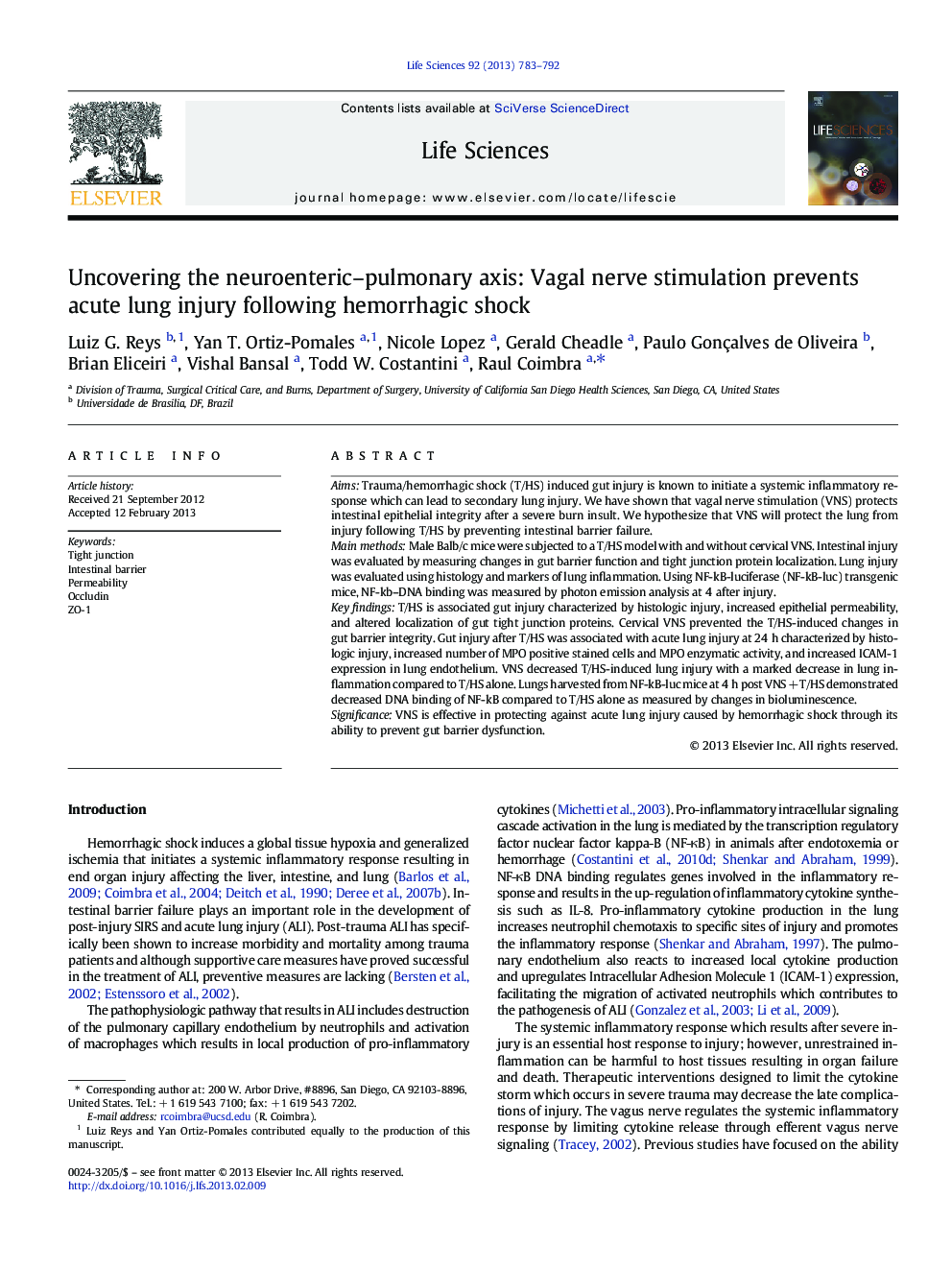| Article ID | Journal | Published Year | Pages | File Type |
|---|---|---|---|---|
| 5842629 | Life Sciences | 2013 | 10 Pages |
AimsTrauma/hemorrhagic shock (T/HS) induced gut injury is known to initiate a systemic inflammatory response which can lead to secondary lung injury. We have shown that vagal nerve stimulation (VNS) protects intestinal epithelial integrity after a severe burn insult. We hypothesize that VNS will protect the lung from injury following T/HS by preventing intestinal barrier failure.Main methodsMale Balb/c mice were subjected to a T/HS model with and without cervical VNS. Intestinal injury was evaluated by measuring changes in gut barrier function and tight junction protein localization. Lung injury was evaluated using histology and markers of lung inflammation. Using NF-kB-luciferase (NF-kB-luc) transgenic mice, NF-kb-DNA binding was measured by photon emission analysis at 4Â after injury.Key findingsT/HS is associated gut injury characterized by histologic injury, increased epithelial permeability, and altered localization of gut tight junction proteins. Cervical VNS prevented the T/HS-induced changes in gut barrier integrity. Gut injury after T/HS was associated with acute lung injury at 24Â h characterized by histologic injury, increased number of MPO positive stained cells and MPO enzymatic activity, and increased ICAM-1 expression in lung endothelium. VNS decreased T/HS-induced lung injury with a marked decrease in lung inflammation compared to T/HS alone. Lungs harvested from NF-kB-luc mice at 4Â h post VNSÂ +Â T/HS demonstrated decreased DNA binding of NF-kB compared to T/HS alone as measured by changes in bioluminescence.SignificanceVNS is effective in protecting against acute lung injury caused by hemorrhagic shock through its ability to prevent gut barrier dysfunction.
